We live in an age of terrorism. The recent attacks in Brussels, Paris, Beirut, San Bernardino, and so many other places around the world are only the most recent examples of terrorist violence to make international headlines. Terrorism, as opposed to ordinary criminal activity, is the use of violence to achieve a political goal. In that sense, it is violence designed to deliver a message. But while we reckon with our current age of terrorism, we should remember that terrorism has been with us for well over 150 years and the patterns have evolved over those decades. Terrorist violence has appeared across the planet but in recent years it has been much rarer in North America and in Europe. There were far more terrorist attacks in the U.S. and especially in Europe in the 1970s than today. Also, in recent years, terrorists have tended toward more brutal, mass casualty attacks. They have changed tactics from attacks on leaders or buildings that have political or military significance to a focus on softer, civilian targets.
1. In the Beginning: The People’s Will
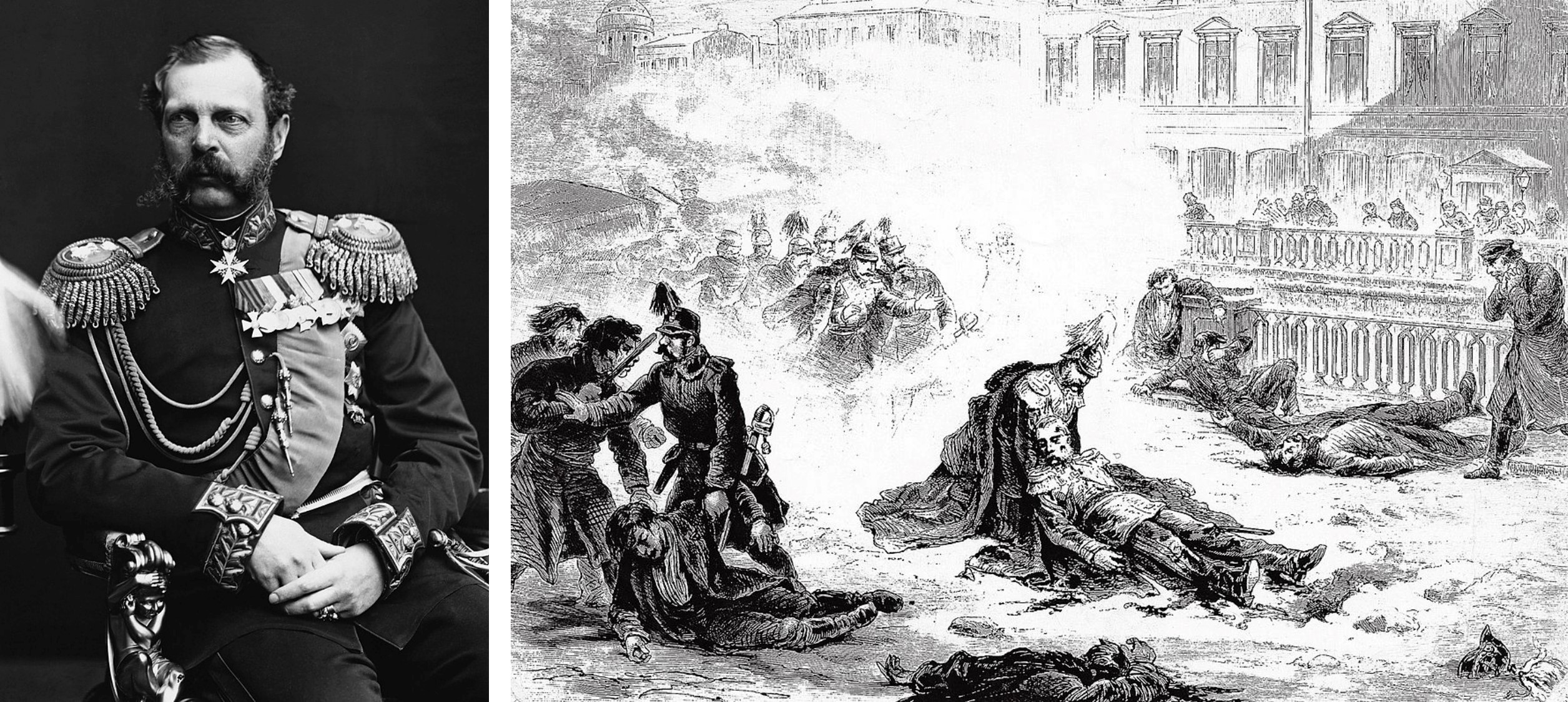
(Left): Alexander II’s reforms were deemed insufficient by Russian revolutionaries, who sentenced him to death in 1879 and carried out the sentence less than two years later. (Right): The Assassination of Alexander II, drawn by G. Broling in 1881.
On March 1, 1881, members of the Russian Revolutionary organization “The People’s Will” assassinated Tsar Alexander II of Russia in the city of Saint Petersburg. While there had been opposition to Alexander’s autocratic rule, his reign had been characterized by steps toward the reform and modernization of Russia’s state and economy. His assassination all but ended this program and resulted in a wave of repression on the part of his successor, Alexander III. This terrorist act therefore altered the political trajectory of late 19th century Russia by encouraging its leaders to over-react and abandon necessary reforms in the name of security. These moves allowed Alexander’s successors to break up the People’s Will relatively easily. But by failing to address the problems in Russian society that compelled the radicals to violence, Russian leaders contributed to the long-term crisis that would destroy the monarchy only a few decades later and bring to life the world’s first socialist state, the Soviet Union.
2. Irgun: Zionist terrorism
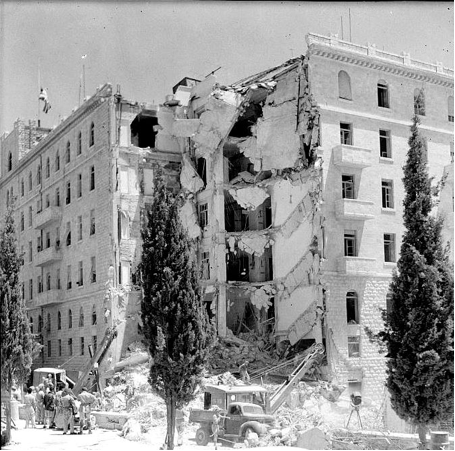
Irgun’s bomb collapsed the south wing of the hotel, killing 91 people and injuring 476 others.
On July 22, 1946, members of the Zionist terrorist organization Irgun, fighting to drive the British government out of Palestine in order to establish a Jewish state there, detonated a bomb in the basement of the King David Hotel in Jerusalem. The hotel was the administrative hub of the British presence in Palestine, and Irgun’s attack was a direct response to massive British raids on Jewish settlements the previous month. Although Irgun phoned in a warning, managers were unable to clear the building in time and the death toll was high. The attack had the desired effect of undermining British public support for the ongoing occupation of Palestine, but in some ways was counterproductive. It resulted in strong condemnation of Irgun by mainstream Zionist organizations such as the Haganah, and thus revealed deep fissures within the Zionist movement.
3. The Munich Olympics, 1972
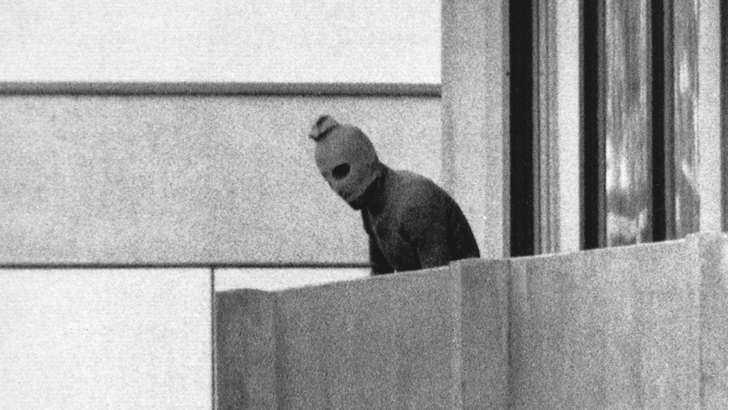
A member of Black September during the negotiations with German authorities.
Prior to the 9/11 attacks, the most notorious instance of international terrorism was the abduction and murder of 11 Israeli athletes at the 1972 Summer Olympics in Munich, Germany. Early on the morning of September 5 eight members of the Palestinian terrorist group Black September attacked the dormitory housing the Israeli athletic team. The terrorists killed two athletes and took nine more hostage. The authorities allowed the games to continue during the day even as negotiations for the lives of the hostages were underway, ensuring massive international publicity for Black September. The crisis was resolved tragically when a poorly planned German effort to free the hostages resulted in a gun battle in which the terrorists murdered all nine hostages and one German policeman was killed by stray gunfire. The publicity that resulted from disrupting the Olympic Games ensured that hundreds of millions of people witnessed the stand-off and negotiations; the overwhelming majority of viewers were appalled by the slaughter and repulsed by the Palestinian terrorists, but the attack did also produce some support for the cause of Palestinian statehood.
4. The Red Brigades
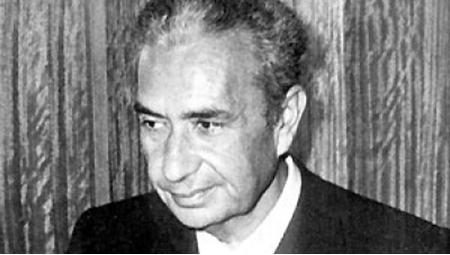
Members of Italy’s Red Brigades, a radical left-wing terrorist movement, kidnapped former Italian Prime Minister Aldo Moro on March 17, 1978. After nearly two tense months the terrorists murdered Moro and dumped his body in Rome on May 9. Moro was the head of the Christian Democratic political party and the most important politician in Italy. The radicals condemned him for his willingness to work with Italy’s communist Party, an act that they believed would undermine the Leninist Revolution that they hoped to achieve. Moro’s popularity, the inability of the police to locate him, and the controversial nature of his initiative toward the communists led to numerous conspiracy theories regarding his death. Decades later, after four trials and two parliamentary commissions, the Moro case continues to haunt Italian politics.
5. The Egyptian Islamic Jihad and President Anwar Sadat
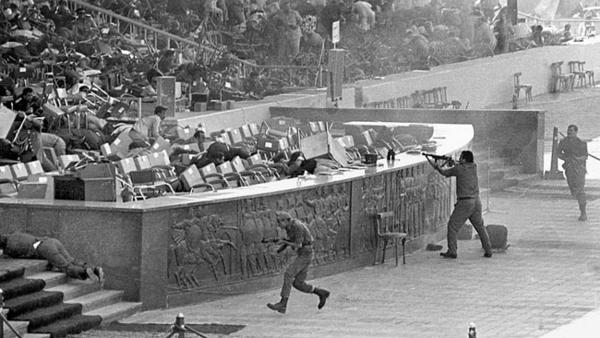
On October 6, 1981, President Anwar Sadat of Egypt was assassinated by members of Egyptian Islamic Jihad, a terrorist group that had split off of the mainstream Muslim Brotherhood many years earlier. The killers sprayed Sadat’s entourage with automatic fire as he reviewed Egyptian troops on the anniversary of Egypt’s 1973 war with Israel. Eleven people were killed along with Sadat, including the Coptic Bishop of Egypt and the Cuban ambassador. In the short term, the attack was motivated by Sadat’s recent peace negotiations with Israel, but in the longer run it was part of a broader conspiracy by Egyptian Islamic Jihad to overthrow the state. While the assassination was a success, the conspiracy failed and Sadat was succeeded by Hosni Mubarak, who used the threat of terrorist violence to subvert Egyptian democracy, ruling under a permanent state of emergency until his own downfall in 2011. Ayman al-Zawahiri, who succeeded Osama bin Laden as symbolic leader of al Qaeda after the latter’s death in May, 2011, was tangentially involved in the plot and was arrested and imprisoned in the aftermath.
6. The U.S. Marine Barracks in Lebanon
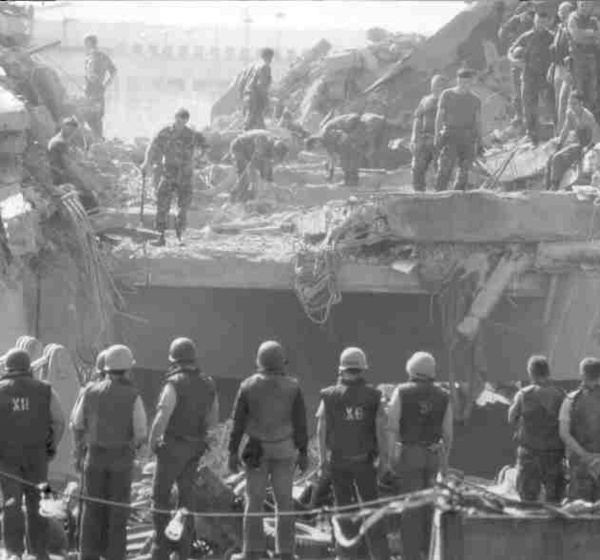
The brutal effectiveness of suicide bombing as a tool for terrorist groups was powerfully demonstrated to the world on the morning of October 23, 1983. At approximately 6:45 am a Mercedes truck slammed into the lobby of the building being used as a barracks by U.S. Marines deployed to Beirut, the capital of Lebanon. A Marine guard observed that the driver of the truck was smiling as he carried out his deadly mission. The truck held approximately six tons TNT equivalent of explosives; when the driver detonated his payload it leveled the entire building, killing 241 U.S. military personnel. Twenty seconds later a second suicide bomber destroyed the building occupied by French paratroopers five miles to the north. 68 French troops were killed. The attacks were claimed by a previously unknown group calling itself Islamic Jihad Organization, but today are widely attributed to Hizballah, the Shi’ite militia that dominates southern Lebanon. The government of Iran also played a significant role in encouraging and carrying out the attacks. Shortly afterward, the Reagan administration withdrew U.S. troops from Lebanon. Over the years Hizballah would grow to be the most powerful non-state actor in the region.
7. The Assassination of Indira Gandhi
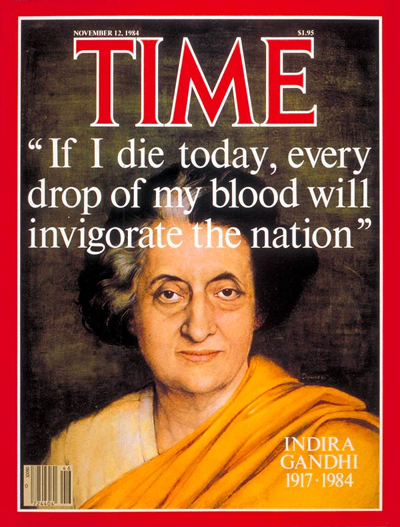
Indira Gandhi, fourth Prime Minister of India, was assassinated by two of her bodyguards on October 31, 1984. The two guards, one of whom Mrs. Gandhi had known for ten years, were Sikhs, a religious minority in India concentrated in the province of Punjab on the India-Pakistani border. Since 1981 Sikh terrorists hoping to create an independent state of Khalistan had become increasingly violent. The previous June, Gandhi had authorized a raid on a Sikh temple thought to house the leadership of the terrorist movement. The raid, called Operation Bluestar, involved seventy thousand Indian troops and resulted in at least 1,000 deaths. Gandhi’s murder was certainly meant to be retaliation for the raid. Her death in turn led to a violent backlash against Sikh separatists and a dramatic escalation in the violence, which led to 15,000 terrorism related deaths in the region between 1985 and 1991.
8. 9/11
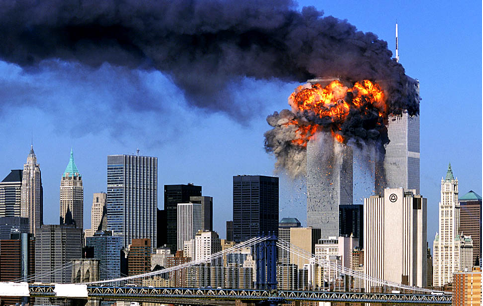
19 terrorists from Osama bin Laden’s al Qaeda organization attacked the United States on September 11, 2001 and successfully carried out the bloodiest and most consequential terrorist act in history. They hijacked four airliners, two of which were crashed into the twin towers of the World Trade Center, destroying the buildings completely. A third airliner was flown into the Pentagon and a fourth crashed into a field after its passengers bravely fought back against the hijackers. More than 3,000 people were killed. The consequences of the attack are still being felt today. As a direct result of the attack, the United States and its allies invaded Afghanistan, which was sheltering al Qaeda. Terrorism of this nature was used as a major justification for the American led invasion of Iraq two years later. The occupations of the two countries have produced instability throughout the greater Middle East, ironically contributing to the growth of terrorism in the region in the years since 2001.
9. Mumbai and the Lashkar e-Taiba Attack
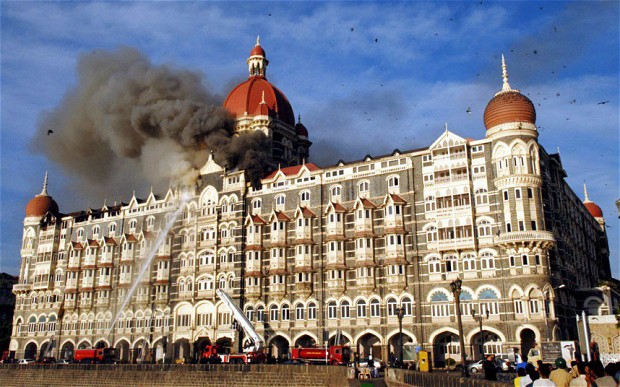
The Taj Mahal hotel in Mumbai burns after being attacked by LET terrorists in November, 2008.
Two teams of five terrorists each from the radical Islamist group Lashkar e-Taiba (LET) attacked the Indian city of Mumbai with a coordinated series of shootings and bombings that took place over four days, from November 26 to November 29, 2008. The used grenades and assault rifles to strike at a train station as well as a café, two hotels, and a Jewish community center. For the first several hours of the attack, the police seemed completely incapable of handling the situation, and by the time the terrorists were defeated they had killed 164 people and injured 308 more. The attack is significant not only for its brutality, but for its international implications. The Indian government was able to build a compelling case proving that the government of its neighbor, Pakistan, had trained and supported the terrorists, and that that attack was therefore part of the ongoing antagonism between the two states that has erupted into war numerous times. The weapons and tactics used by the LET terrorists provided a template that other terrorist groups have since followed to devastating effect, first by al-Shabaab in a mall attack in Nairobi in September, 2013, and more recently by the teams of attackers that terrorized Paris in November, 2015.
10. Mosul, 2014, and ISIS
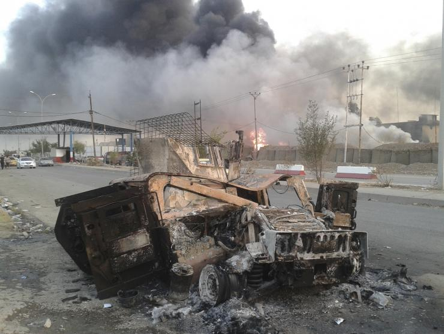
In early June, 2014, hundreds of members of ISIS, the resurgent successor to al Qaeda’s Iraqi franchise, defeated the Iraqi army and took control of the city of Mosul, second largest city in Iraq. The assault was the culmination of a carefully planned strategy that had been in place for over two years. During the final assault on the city the militants used brutal mass casualty suicide bombings, often utilizing armored vehicles left behind by the United States, to batter the city’s defenses and also made deft use of social media to undermine the morale of government forces and to inspire potential members. Human rights organizations confirmed the executions of at least 500-800 people in the days following the fall of the city on June 10. The speed, scope, and savagery of the assault were unprecedented and demonstrated conclusively that terrorist networks located in Iraq had evolved into something far more dangerous—a guerrilla army that some described as a proto-state. To drive this point home, three weeks later the group’s leader, Abu Bakr al Bagdhadi, declared himself Caliph, leader of the world’s 1.6 billion Muslims, and claimed that Mosul would be the capital of a new Caliphate that would realize the ambitions of generations of Islamic activists.
